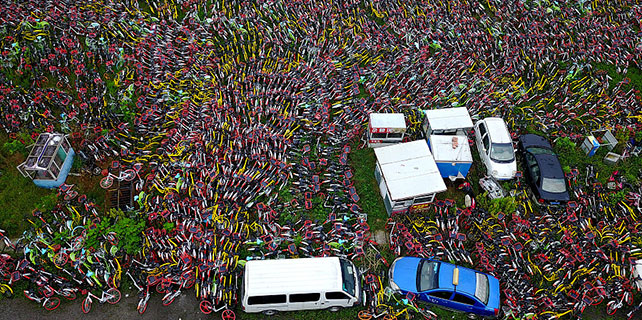Tourist spots take away welcome mat
Visitors turning popular destinations into nightmare for weary residents
BARCELONA - Exasperated with the hordes of visitors they blame for making their city unlivable, Barcelona residents have risen in protest.
The hugely popular Catalan metropolis has become the latest European hot spot to eye tourism with hostility.
From the romantic canals of Venice to the walled medieval town of Dubrovnik via the wilderness of Scotland's Isle of Skye, tourism is morphing into a nightmare for many locals, despite the jobs and income it undoubtedly generates.
In the trendy seaside Barceloneta district of Barcelona, residents have for years complained about anti-social behavior like drunkenness and sex in public areas, as well as a leap in rental prices that has forced many locals out.
"We don't want tourists in our buildings," read banners in a protest over the weekend, in which dozens of locals took to a beach that draws revelers from all over the world.
Similar demonstrations have flared in other parts of Spain, the world's third most popular tourism destination.
This summer in Palma de Majorca in the Balearic Islands, activists burst into the port, setting off flares of red smoke and throwing confetti over people eating at a restaurant.
Others assaulted a bus full of tourists in Barcelona, painting over its windscreen and giving passengers a fright.
Beyond these protests, officials too have started addressing the problem of overcrowding.
Major source
The Balearics, for instance, have just limited to about 620,000 the number of visitors that can stay in hotels or legal rental accommodation.
Faced with the protests and criticism, Spanish Prime Minister Mariano Rajoy was forced to defend a sector that counts for 11 percent of Spain's economic growth.
"I never thought I would have to defend the Spanish tourism sector, it's really unprecedented," he said earlier this month.
Tourism is a major source of growth outside of Spain, too.
According to the World Tourism Organization, one in 10 jobs worldwide is tied to a sector that generates 10 percent of global GDP.
"Tourism is not the enemy," UNWTO chief Taleb Rifai said.
From 1995 to 2016, the number of international travelers went from 525 million to 1.2 billion thanks to low-cost companies and visitors from emerging markets.
As a result, some destinations are now sagging under the weight of tourists.
Dubrovnik in Croatia is a favorite with cruise ships - a popularity that soared even further when it was used as a backdrop in the smash TV series Game of Thrones.
The walled old town is a delight of 17th-and 18th-century architecture. Locals, though, do their best to avoid it, saying it is almost impossible to move in the congestion.
One of the solutions to overcrowding is to encourage visitors to go to less visited districts, thus easing up city centers, says Rafat Ali, founder of the Skift travel information website.
But Rifai warns against saying no to tourism.
"The same people that today are saying we don't want any more tourism are going to be the first ones to cry out when we lose them," he said.
Agence France-presse









